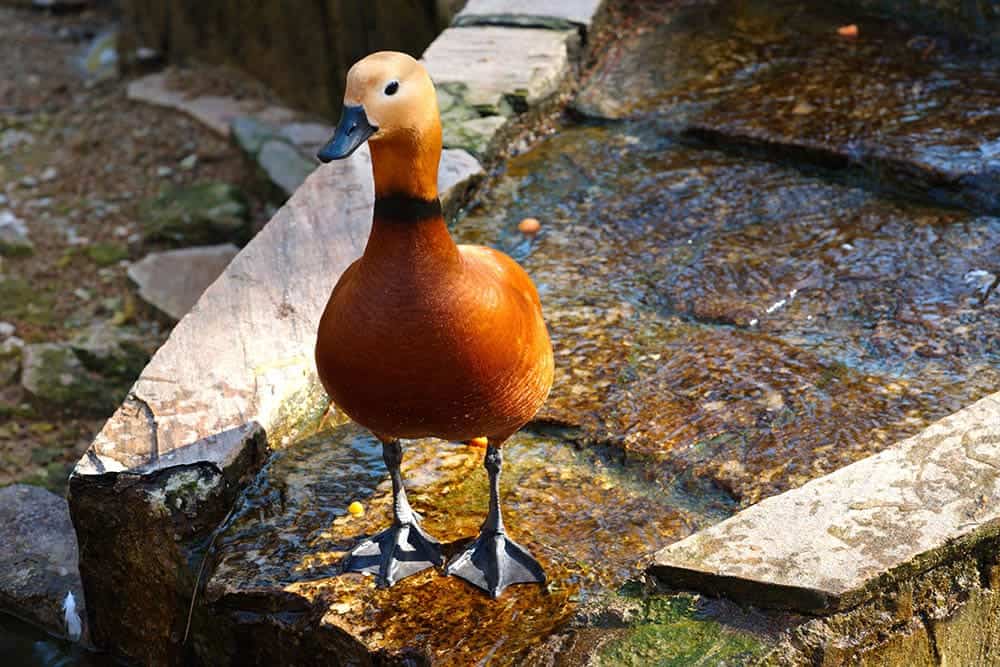The Elizabeth duck is a rare breed of domesticated duck that was developed in Australia. They’re raised for meat, though they do produce eggs in low quantities. These birds are known for good temperaments and low-maintenance husbandry. Because the breed is only available in Australia and New Zealand, the Elizabeth duck is considered endangered by the Rare Breeds Trust of Australia.1

Quick Facts about Elizabeth Ducks
| Breed Name: | Elizabeth duck |
| Place of Origin: | Australia |
| Uses: | Meat |
| Drake (Male) Size: | 3.5 to 3.9 pounds |
| Duck (Female) Size: | 2.6 to 3.5 pounds |
| Color: | Brown, fawn, blue-green flight feathers |
| Lifespan: | 10 years |
| Climate Tolerance: | All climates |
| Care Level: | Minimal |
| Production: | Low |
| Availability: | Rare |
Elizabeth Duck Origins
Elizabeth ducks were bred in 1972 by Lance Ruting in the Merrylands region of New South Wales, Australia. He created the breed by crossing the Mallard and Rouen Claire ducks with the intent of creating a fast-growing duck that would provide abundant, high-quality meat.
The duck is only reared in Australia and New Zealand, though it may be found on farms around the world. It’s classified as endangered and not found in the wild. In Australia, Elizabeth ducks are classed as ornamental domestic ducks.

Elizabeth Duck Characteristics
The Elizabeth duck is a beautiful, small duck breed raised primarily for meat. It’s small and stocky compared to other duck breeds. Overall, they’re calm and friendly in nature, making them suitable for farms or as pets.
Uses
The Elizabeth duck was produced as a small, fast-growing meat duck breed, though it can be used for modest egg laying. These birds don’t produce many eggs, but they do reach slaughter age quickly and yield between 2 pounds and 4 pounds of meat. Their meat is known for being tender and tasty.
Many people keep it as an interest-breed. In Australia, it’s considered an ornamental domestic duck.
Appearance & Varieties
The Elizabeth Duck comes in two varieties:
- The mallard-type has a green head and a brown chest.
- The coffee type has a coffee or brown coloration with blue wing tips.
Both types have blue-gray bills.
The ducks come in one color and are short with a broad chest and a round breast. The ducks also have blue-green secondary flight feathers and off-white primary flight feathers with gray.
The drakes have more coloration, including a glossy green head with a right ring, a claret-colored chest with cream borders, and an off-white abdomen. Drakes also have charcoal gray feathers with white rings.
Both ducks and drakes have bronze legs, gray bills, and dark brown eyes.
Population/Distribution/Habitat
The Elizabeth duck was bred in 1972 in the Merrylands region of New South Wales in Australia. Though the breed is only reared in New Zealand and Australia, it’s suitable for almost any climate. These ducks are tolerant of different climate conditions with appropriate housing and are generally low maintenance.

Are Elizabeth Ducks Good for Small-Scale Farming?
Elizabeth ducks are easy to care for and generally calm, making them a good choice for hobby or small-scale farms. They are fast-growing and reach slaughter weight quickly, yielding good meat portions. They can be kept to produce eggs, though production is low and may not be suitable for commercial farming at any scale.
Elizabeth ducks are beautiful, stocky, and low-maintenance ornamental ducks that were created in Australia. They are fast-growing and yield high-quality meat, as well as eggs, and may be kept as a pet or farm companion animal.
Featured Image Credit: Kirlikedi, Shutterstock
